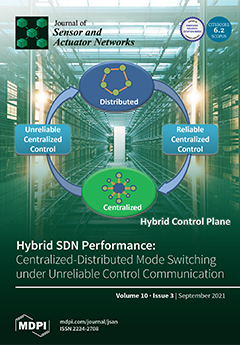The recent, massive diffusion of LED-based illumination devices makes Visible Light Communications (VLC) a widely recognised wireless communication technology with large potential impact in many indoor and outdoor applications. In the indoor scenario, one of the most promising VLC implementations is foreseen in
[...] Read more.
The recent, massive diffusion of LED-based illumination devices makes Visible Light Communications (VLC) a widely recognised wireless communication technology with large potential impact in many indoor and outdoor applications. In the indoor scenario, one of the most promising VLC implementations is foreseen in museums, exhibitions and cultural heritage sites. In this context, digital data can be transmitted by the specific lighting system of each artwork and received by the nearby standing visitors, allowing a complete set of dedicated services such as augmented reality (AR) and real-time indoor positioning, exploiting the directionality of the optical channel. In this work, we achieve, for the first time, VLC transmission through diffusive LED illumination of three-dimensional artworks (wooden and marble sculptures) in a real museum, exploiting the available LED illumination system, demonstrating the feasibility of VLC technology also when complex three-dimensional artworks, such as sculptures or bas-reliefs, are involved. In our experimental campaign, performed inside the Basilica of Santa Maria Novella in Florence, we perform extensive Packet Error Rate (PER) and Signal-to-Noise Ratio (SNR) tests on two important wooden and marble sculptures (
Crucifix by Brunelleschi and the
Holy Water Font by Bordoni, respectively), for different distances, view angles and configurations, in order to mimic a wide set of situations that visitors may encounter in a realistic scenario. We achieve successful VLC transmission for distances up to 8 m from artworks, at baud rate of 28 kBaud. We also provide detailed results on the characterization of the transmission Field of View (FoV) for our prototype, as well as the effect of side shifts of the observer’s position on the quality of VLC transmission, providing essential information for future implementations of positioning protocols and dedicated services in realistic, indoor scenarios. Our work represents an important step forward towards the deployment of VLC technology in museums and, more in general, it opens for far-reaching developments in a wide set of real indoor environments, including the cultural heritage sector, where diffusive VLC links exploiting illumination of three-dimensional objects could represent a ground-breaking innovation.
Full article





